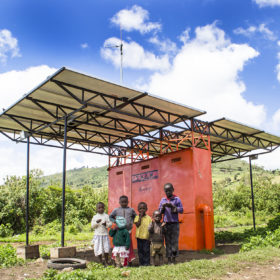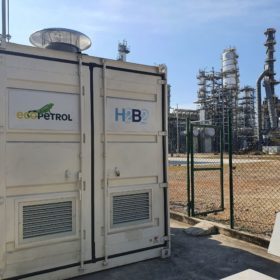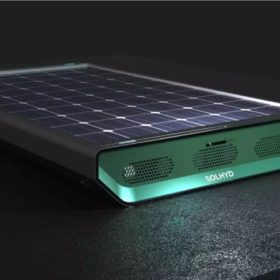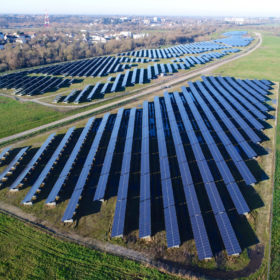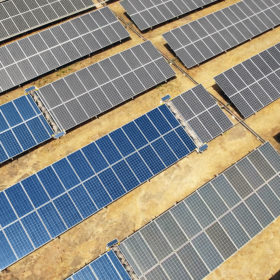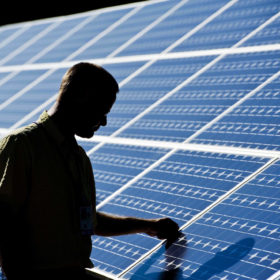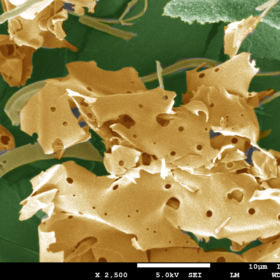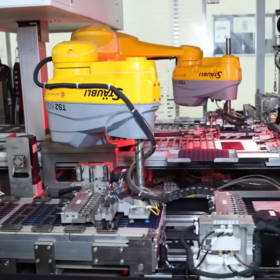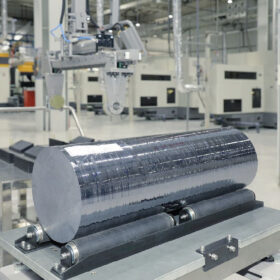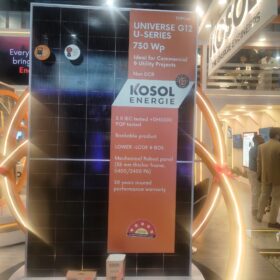International Solar Alliance launches innovation challenge in Africa
SolarX Grand Challenge aims to promote entrepreneurship and innovation and discover local solutions to meet the energy gap through solar energy solutions in the African region.
Addressing challenging terrains; optimizing production
Faced with undulating terrains, solar PV companies are leveraging modern technologies to achieve terrain flexibility across challenging sites to deliver unmatched efficiency improvement and bring production gains to solar projects.
GR Promoter Group forms green hydrogen JV with Spain’s H2B2
India’s GR Promoter Group has entered the green hydrogen market in a joint venture with Spanish hydrogen technology solutions provider H2B2. The JV will manufacture water-based electrolyzers and develop green hydrogen production plants based on off-taker agreements.
Hydrogen-producing rooftop solar panels nearing commercialization
KU Leuven researchers have developed rooftop panels that capture both solar power and water from the air. Like traditional PV modules, hydrogen panels are also connected, but via gas tubes instead of electric cables. The researchers are now preparing to bring the tech to the mass market via a spinoff company.
Tech advances halving surface needed for ground-mount solar
French developer VSN Energies Nouvelles was able to almost double the capacity of one of its PV projects due to technological advances such as high-powered panels and new plant design concepts.
Key factors when choosing an automated cleaning system for utility scale PV
Automating utility-scale solar facilities is now a standard consideration of independent power producers (IPPs), with robotics representing a relatively small portion of total investment. Despite this, offers from technology suppliers should be thoroughly scrutinized, as wrong choices can pose a significant risk to a power generation asset that is expected to last 25 years or more.
Most new solar panels retain 80% production after 30 years
A five-year Sandia Labs study on solar module degradation shows that 13 out of 23 tested module types have effective lifetimes exceeding 30 years.
New anode material could enable EV battery charging within 10 minutes
Researchers from the Indian Institute of Technology, Gandhinagar, and Japan Advanced Institute of Science and Technology (JAIST) have developed a two-dimensional (2D) anode material for lithium batteries by using nanosheets derived from titanium diboride. They found the new anode material leads to a discharge capacity of 174 mA h/g within 10 minutes at a current rate of 1 A/g.
IBC solar modules may drive TOPCon out of market by 2028, says tech expert
Radovan Kopecek, an expert on interdigitated back-contacted (IBC) tech, says that IBC solar panels could capture more than 50% of the global market by 2030, potentially pushing TOPCon products out of competition. He told pv magazine how this transition might materialize and discussed the tech advancements that could make it possible.
Uninterrupted PV generation without storage
An Israeli scientist has proposed a way to achieve uninterrupted PV power on the moon without using energy storage. The proposal involves the installation of PV panels around a 360-degree latitudinal ring close to one of the moon’s poles. There would be no inter-array shading, and static vertical PV arrays and arrays mounted on single-axis vertical trackers could be viable mounting structures.
